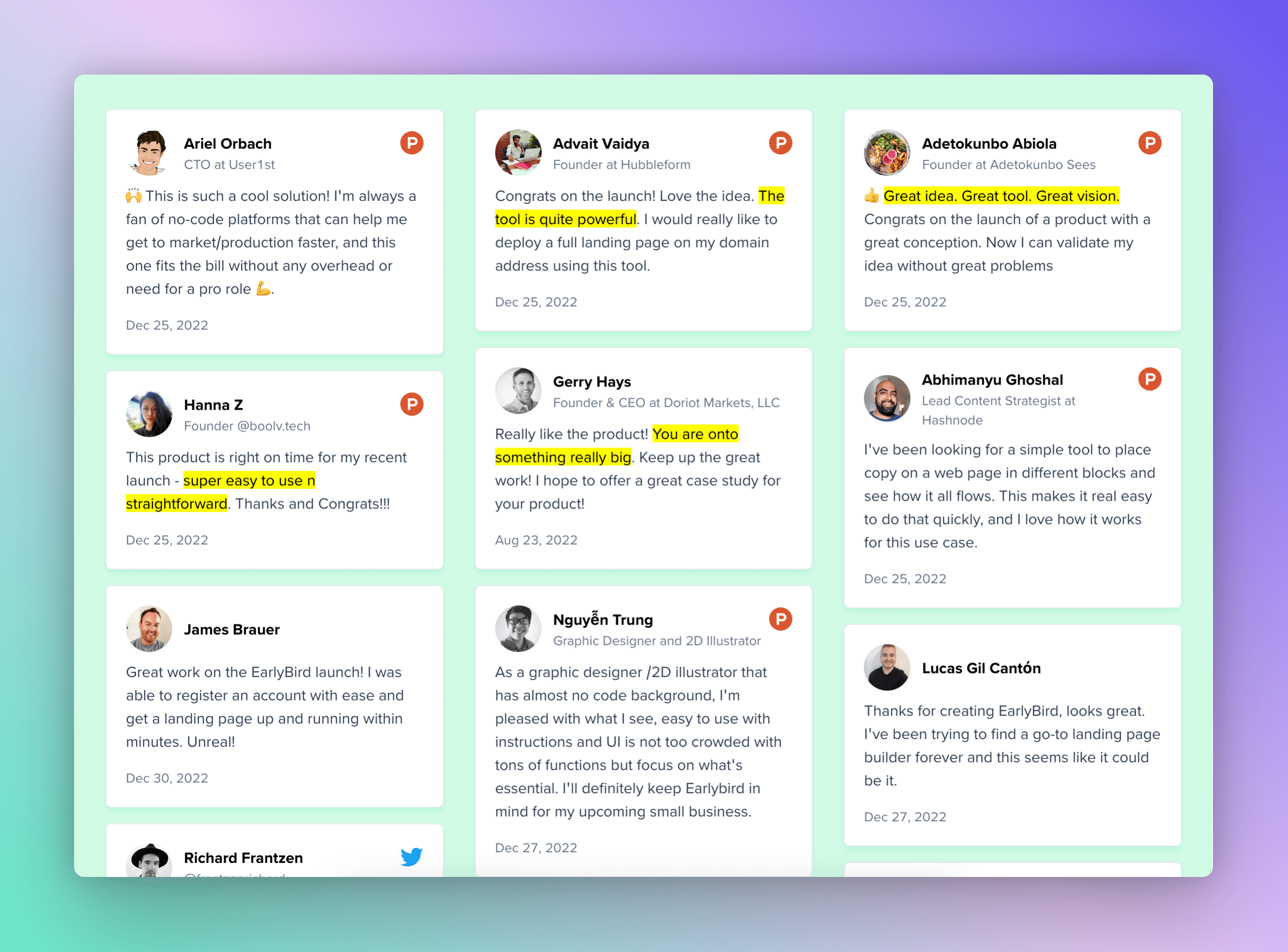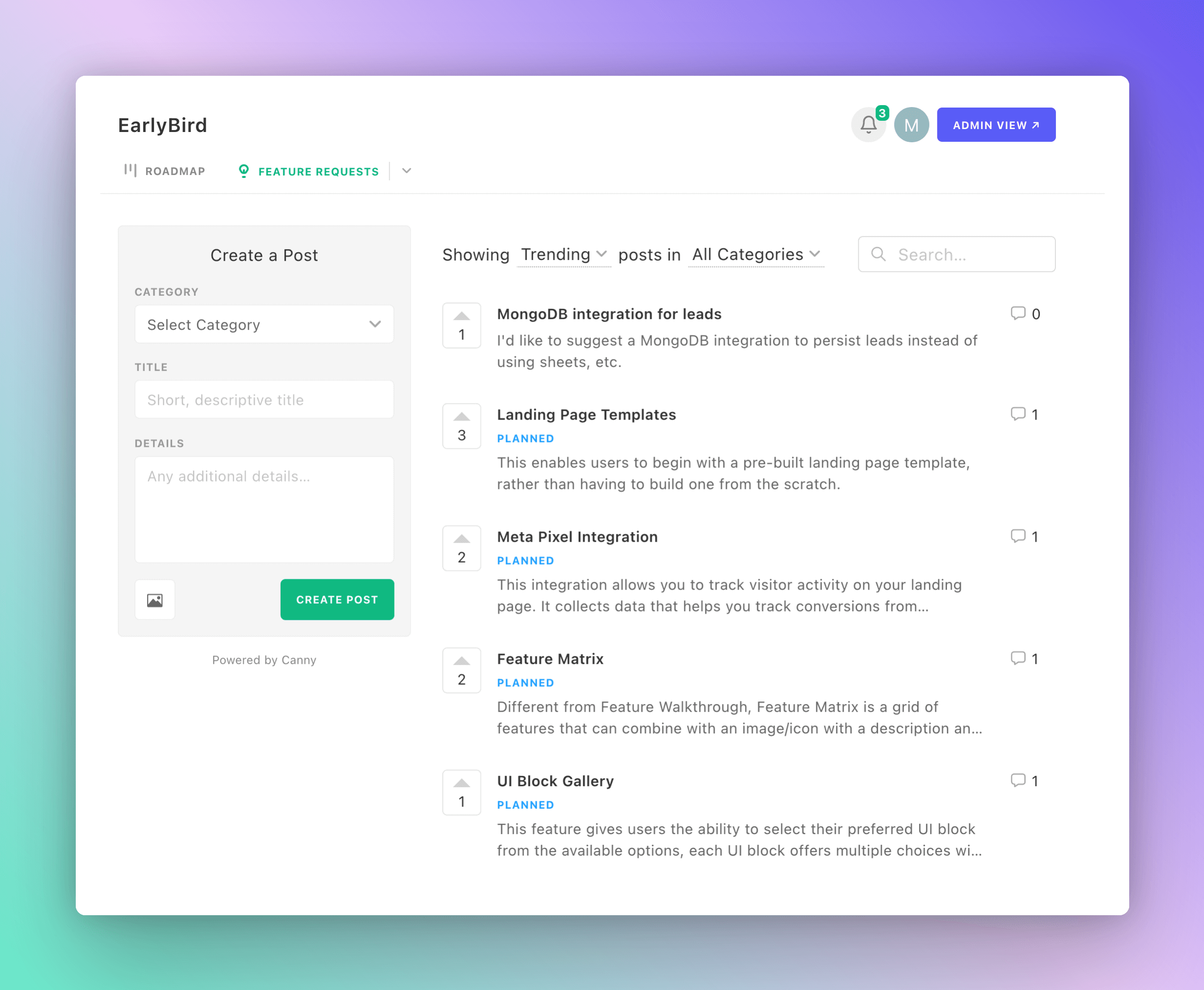What we learned from acquiring 1500 users in 53 days with a $0 budget
It's 53 days since we officially launched EarlyBird. With a $0 marketing budget, we relied on organic growth and user feedback to guide our product development.

It's 53 days since we officially launched EarlyBird. With a $0 marketing budget, we relied on organic growth and user feedback to guide our product development. This article will share what we learned from acquiring 1500 users over 53 days. If you're an indie hacker looking to release the big thing, we bet you'd find this helpful.
Shipping fast and frequent
Validation is everything. We initially shipped our beta version on Product Hunt and later crossposted the update on various platforms such as Twitter, Hacker News, Indie Hacker, Reddit, etc.

And our team consciously prioritized speed over perfection in the early stages of EarlyBird's development. We aimed to get our product to users as soon as possible to gather feedback and iterate quickly. We released new features every week and often shipped updates even more frequently. By doing so, we could address user feedback quickly and improve the product in real time. This practice reinforced trust, and our users shared our product with their friends and peers.
Weekly updates
We also found that sharing weekly updates with our users effectively kept them engaged and informed about our progress. These posts and newsletter emails included information on new features, bug fixes, and other relevant product news. By providing regular updates, we demonstrated to our users that we were actively working to improve our product and address their needs.
Niche content
Creating niche content was also an essential part of our marketing strategy. We knew our target audience was SMBs looking to validate their ideas and create landing pages, so we focused on creating content that spoke directly to their needs. We also published a Landing OS series to educate folks new to landing pages. And yes, all our niche articles are SEO-focused as well. We consider it a long-term investment.
Writing content on demand
As our user base grew, we received a lot of questions and feedback about our product. We quickly realized that providing fresh, helpful resources and documentation was key to improving user experience and reducing support requests.To address this, we started creating help articles based on the most common questions and issues our users were facing. We also regularly update the articles based on user feedback and changes to our product.By creating help articles based on user feedback, we reduced the number of support requests we received and improved the overall user experience. This, in turn, helped us to build trust and credibility with our users.
Social Proof

Another lesson we learned was the power of social proof. As a new product in a competitive market, we knew building trust with potential users would be critical to our success. By showcasing testimonials and reviews from our satisfied users, we demonstrated the value of our product and built trust with new users. This includes testimonials from Product Hunt, Twitter, and other platforms.
Community Outreach
Engaging with our community was another vital part of our strategy. We knew that by participating in relevant online communities, we could connect with potential customers, answer their questions, and offer valuable insights. Luo is already an active member of the indie-hacking community on Twitter. The engagements on Twitter, Hacker News, and Indie Hacker helped us big-time develop the product. And lately, we have started to engage in Facebook communities as well.
Learn from users

The most important lesson we learned was the value of listening to our users. We understood that our users were the best source of feedback and insight into what was working and what needed improvement in our product.
We actively gathered feedback through EarlyBird's feature request platform, social media channels, and emails. By doing so, we identified areas where our product needed improvement and prioritized new features based on user demand.
Growth hacking
In addition to the lessons outlined above, we learned the importance of hacking and finding new growth opportunities. As a startup with limited resources, it was essential for us to be creative in our approach to growth. We always engage with forum posts and communities where we can add value to conversation by mentioning EarlyBird. However, we took a subtle and less aggressive approach. We also looked into several backlink opportunities in the past 53 days.
Conclusion
Managing the user acquisition for EarlyBird remains a rewarding experience. We learned a lot of new things in the past 53 days. We are grateful to our users for their feedback and support and are committed to improving our product to meet their needs. And we firmly believe this approach is reusable for other indie hackers and makers in the SaaS scene.
